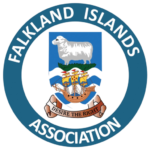State of the Economy Report 2015
The Falkland Islands Government’s Policy Unit published a report on the state of the Falkland Islands’ economy in March 2015 – click here for full report.
This stated that the Falkland Islands economy was generally doing well with some impressive but volatile growth since the global economic downturn in 2008. Much of this had been fuelled by the discovery of oil in 2010 in the Sea Lion field in the Falklands northern basin. Despite some disappointments after that, the 2015 season had started with an immediate discovery of oil and gas in the Zebedee well. But a dramatic 50% fall in the price of oil since mid-2014 had led to some downscaling and if prices continued to decline, further exploration in remote locations like the Falklands could be put on hold.
Other sectors were healthy or at least stable. Fisheries revenues remained strong; lamb and mutton exports were growing and tourism was recovering after a downturn of several years. Unemployment rates were low and the government remained well resourced and free of debt.
But there were challenges common to many remote small island economies – high transport and telecommunication costs, dependency on certain commodities both for import and export and so vulnerable to shifts in world market prices, and a tiny population which, despite low unemployment, affected the local labour market and business opportunity. This was further complicated by the Argentine Government’s attempts to disrupt trading and communication links with the Falklands.
Gross Domestic Product (GDP) figures for the Falkland Islands between 2007 and 2012 showed strong growth and a high GDP per capita figure of £77,000 in 2012. But this is misleading since much of the wealth goes off-shore. Gross National Income (GNI) figures gives a more reliable picture of wealth created for people living in the Falklands – £39,000 per capita.
Overall, the Falklands had a trade deficit of £176 million in 2012 (or 80% of the value of exports). But most of this was due to the imports required for hydrocarbons exploration; stripping that out, the deficit reduces to £9 million. Total imports in 2012 amounted to £396 million, mainly (87%) from the UK.
The main export sectors included
- fisheries (£184.5 million in 2012) but revenues were volatile (£76.4 million in 2009);
- wool (£5.4 million in 2013) down from £6.5 million in 2011 because of a slump in world prices;
- lamb/mutton (£2 million in 2013) with beef taken up by domestic demand; and
- tourism (£9.5 million in 2012) mainly from air rather than se arrivals.
In terms of sectoral analysis, the report highlighted various points:
- Fisheries: represents 34% of GDP but much of the benefit goes off-shore, since licences are bought either by foreign vessels (e.g Taiwanese jiggers) or by joint ventures between foreign and local companies. But fishing licences had generated £10 – £30 million pa since they were first levied in 1987 and fishing companies contributed 30-45% of total corporation tax levied. The Falklands had 8% of the total world market share of toothfish and 13% of loligo squid (2011 figures).
- Hydrocarbons: the sector expanded significantly in the second drilling round in 2010-12 and a further round has already begun this year. The oil sector represented 25% of GDP in 2012 and could see exponential growth if more significant discoveries are made. But this would result in a major immigration influx and put tremendous pressure on housing in Stanley, which is already in short supply.
- Tourism: represented just under 5% of GDP in 2007. Cruise ship passengers grew from a few thousands in the mid-1990s to 60,000 passengers in 2008-09. But the global slump in 2008 affected the North American markets, reaching a low of 29,500 passengers in 2012-13. But cruise ship numbers are picking up again. Tourists arriving by air spend more on-island than cruise ship passengers (£7.8 million in 2012 against £1.7 million respectively).
- Agriculture: sheep farming had provided the Islanders’ traditional livelihood since 1850 and is still a significant local employer – and important for local customs, traditions and the Falkland Islands’ identity. But the sector’s relative importance to the economy has seriously declined – in 2012 it represented only 2% of GDP.
The Falkland Islands Government (FIG) remains in a strong position financially. It has long pursued a policy of no public-sector borrowing and maintaining reserves at 2.5 times the annual operating budget. Budgets have traditionally been balanced although recently FIG benefited from a significant surplus generated from the hydrocarbons sector.
The 2012 census revealed a total population of 2,562 people excluding the military presence, increasing to 2,931 by incorporating MOD-contracted civilians and to about 4,000 by including military personnel as well. Average annual gross income in 2012 was £23,000 and the mean wage £17,500. The dependency ratio of 38 – i.e. the proportion of non-working people to the working population – was large enough to cover the costs of pensioners and children in society. This compares favourably with the UK ratio of 52.7 and Japan’s of 59.6. The state pension fund, however, was not self-supporting and either had to be topped up by direct subvention from the FIG budget or by increases in personal and/or employer contributions.
The Falkland Islands benefits from low unemployment with many having two or more jobs. The labour force comprised 86.6% men and 77.7% women in 2012. Female pay rates, however, lagged behind those enjoyed by men despite equal pay legislation. But the combination of a tiny population and low unemployment has led to a shortage of skilled labour and the requirement to fill gaps with immigrant labour.
It also has a negative effect on business opportunity, despite a relatively beneficial tax regime – corporation tax of 21% for small businesses with less than £1 million in profits and 26% for larger firms and companies involved in the hydrocarbons industry. Although the business sector has thrived, the local market is too small to allow economies of scale and the costs of transportation to other markets are high.


